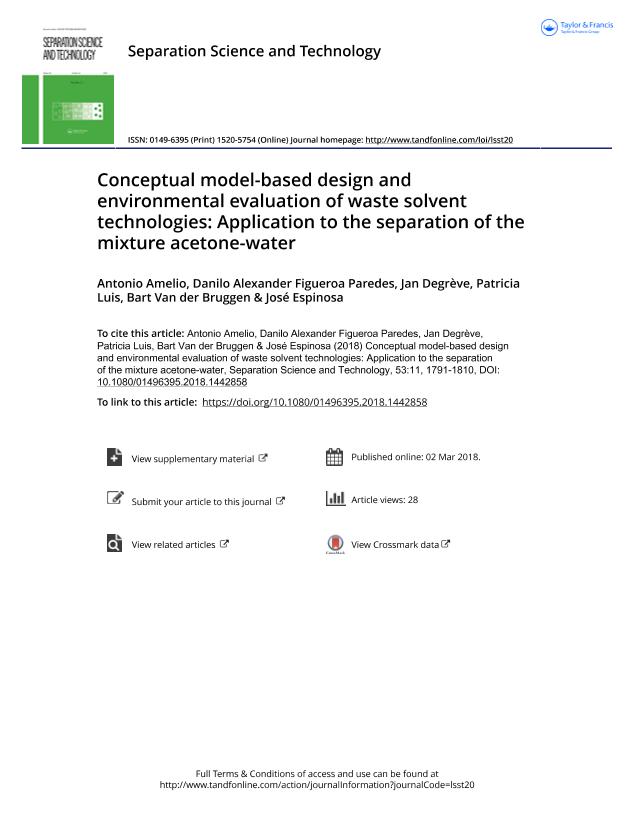Artículo
Conceptual model-based design and environmental evaluation of waste solvent technologies: Application to the separation of the mixture acetone-water
Amelio, Antonio; Figueroa Paredes, Danilo Alexander ; Degrève, Jan; Luis, Patricia; Van der Bruggen, Bart; Espinosa, Hector Jose Maria
; Degrève, Jan; Luis, Patricia; Van der Bruggen, Bart; Espinosa, Hector Jose Maria
 ; Degrève, Jan; Luis, Patricia; Van der Bruggen, Bart; Espinosa, Hector Jose Maria
; Degrève, Jan; Luis, Patricia; Van der Bruggen, Bart; Espinosa, Hector Jose Maria
Fecha de publicación:
07/2018
Editorial:
Taylor & Francis
Revista:
Separation Science and Technology
ISSN:
0149-6395
Idioma:
Inglés
Tipo de recurso:
Artículo publicado
Clasificación temática:
Resumen
In this paper, two waste solvent technologies are presented as alternatives to the disposal of spent acetone-water mixtures. In the first alternative, a batch rectifier is used to concentrate the waste in order to obtain a distillate with a higher calorific value, which is then sent to off-site incineration either in a cement kiln or in a conventional waste solvent incinerator. The second alternative is a hybrid process composed by a batch rectifier and a pervaporation unit that processes in batchwise mode the first cut from the distillation task to obtain a dehydrated solvent. Here, four scenarios are considered, comprising two kinds of membrane materials and two different vacuum systems. For each alternative, the conceptual design was carried out with the aid of conceptual models of the unit operations involved. Quasi-optimal values for design and operation variables were used as input data to perform an economical and an environmental assessment of each alternative. The economic analysis suggests that the hybrid process is the best alternative given that the replacement cost of fresh solvent (about 850 U$S/ton) is considered as a credit value. From the environmental analysis with life cycle assessment, two main conclusions can be drawn: i) the use of the distillate as an alternative fuel in a cement kiln leads to a reduction in emissions that is relevant for the categories related to human health and ecosystem quality; and ii) in terms of resource depletion, the hybrid process distillation/pervaporation with the ceramic membrane HybSi (Pervatech) shows the lowest impact due to the solvent recovery.
Archivos asociados
Licencia
Identificadores
Colecciones
Articulos(INGAR)
Articulos de INST.DE DESARROLLO Y DISEÑO (I)
Articulos de INST.DE DESARROLLO Y DISEÑO (I)
Citación
Amelio, Antonio; Figueroa Paredes, Danilo Alexander; Degrève, Jan; Luis, Patricia; Van der Bruggen, Bart; et al.; Conceptual model-based design and environmental evaluation of waste solvent technologies: Application to the separation of the mixture acetone-water; Taylor & Francis; Separation Science and Technology; 53; 11; 7-2018; 1791-1810
Compartir
Altmétricas



